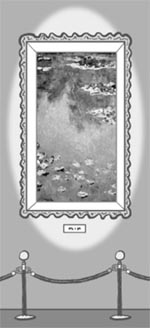Revaluing creativity and cultural pursuits

Last weekend, I took a two-day trip to Naoshima, Japan, and returned home feeling envious. Naoshima is known for the Chichu Art Museum, designed by architect Tadao Ando. The museum displays five paintings from Claude Monet’s Water Lilies series, including “Water-Lily Pond.” Entering the room where Monet’s paintings were kept was like going on a pilgrimage. Visitors had to take their shoes off and change into the white slippers provided by the museum, and only a limited number of viewers were allowed in the room at one time.
I was able to view James Turrell’s “Open Sky,” but had to give up “Open Field” because of the long line. I paid 2,000 yen ($26) for admission, but the museum was not the friendliest to its visitors. Nevertheless, the museum is visited by people from all around the world, and Naoshima is considered one of the top seven tourist destinations in the world.
The town not far from the Chichu Art Museum is known for a series of installations under the name Art House Project. An old dentist’s office, a shrine and houses have all been turned into installations. While there, I was reminded of the restaurants and bars in Pimatgol that were forced to close and it made me think that they, too, could have been reborn as art. In the West, old mines, empty factories and power plants are often turned into cultural spaces. This is happening in Korea, too, though unfortunately not in Pimatgol alley.
The person who revived Naoshima and imbued it with art was Soichiro Fukutake, the president of Benesse Corporation, which offers distance learning and test preparation services. He is a self-proclaimed “public interest capitalist” who believes that financial capitalism has no future and likes to say, “The economy is the servant of culture.” We should encourage that kind of thinking here. It is about time we broke from our tired old routines and pursued diversity, creativity and artistic experience.
*The writer is an editorial writer of the JoongAng Ilbo.
By Noh Jae-hyun










with the Korea JoongAng Daily
To write comments, please log in to one of the accounts.
Standards Board Policy (0/250자)